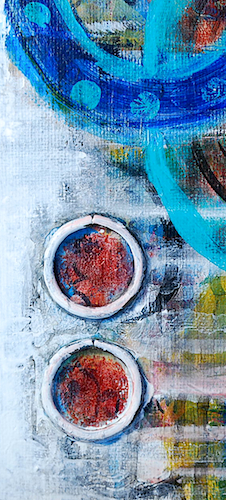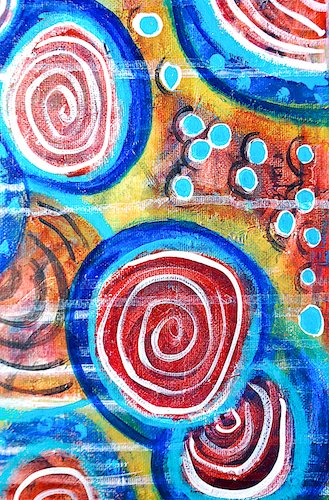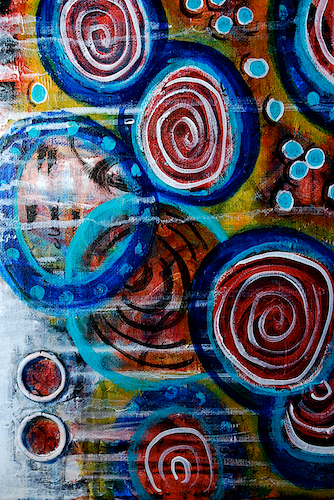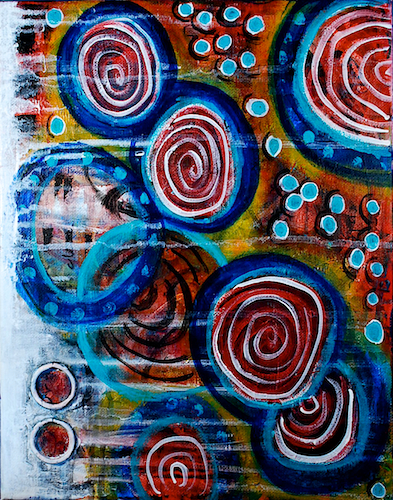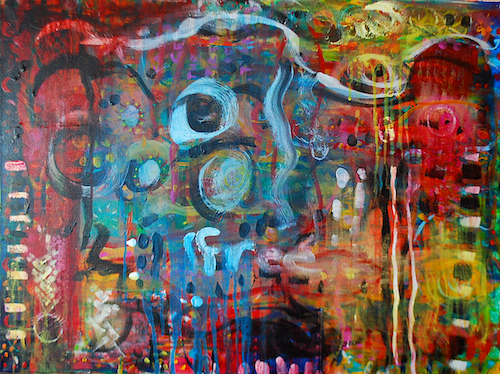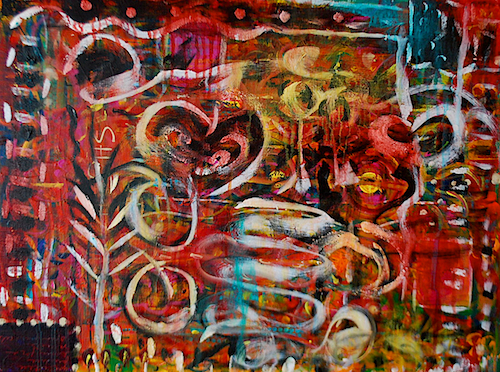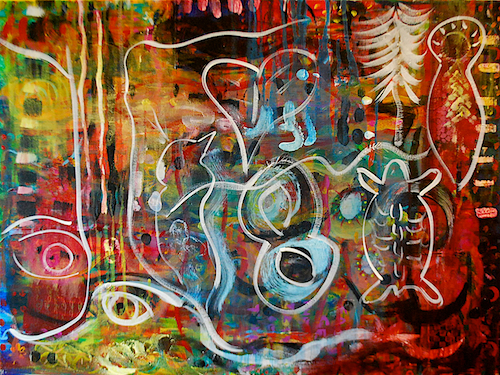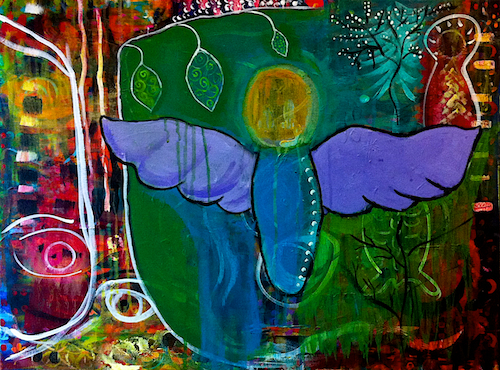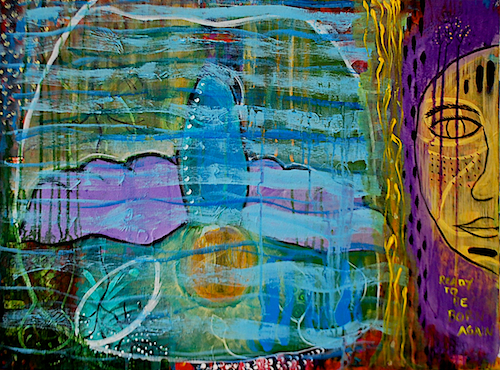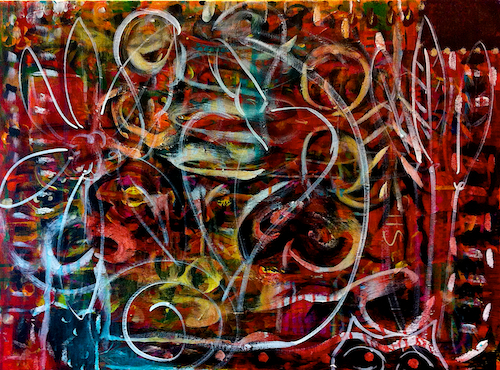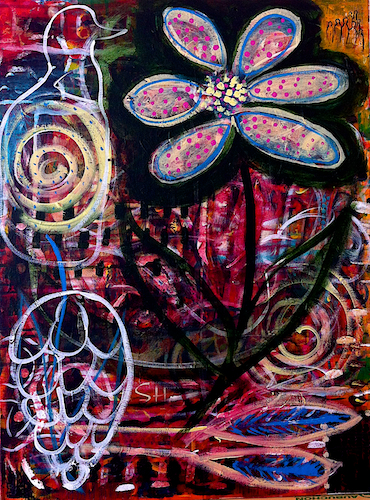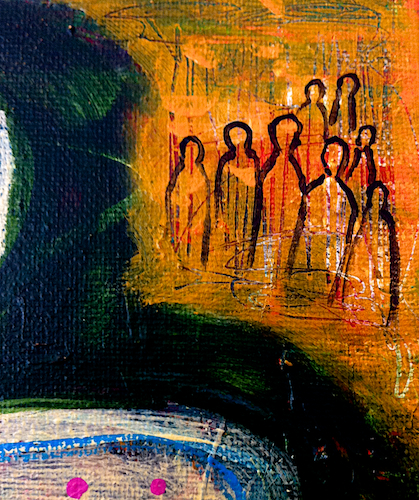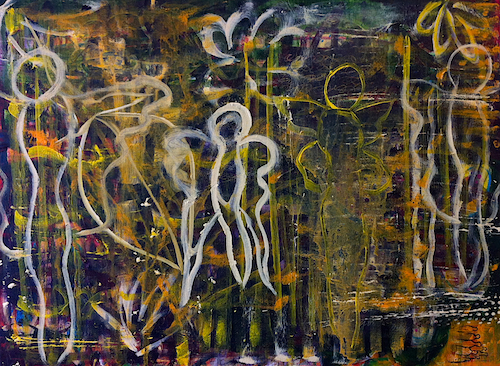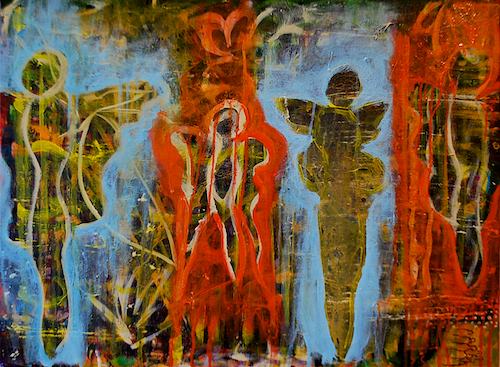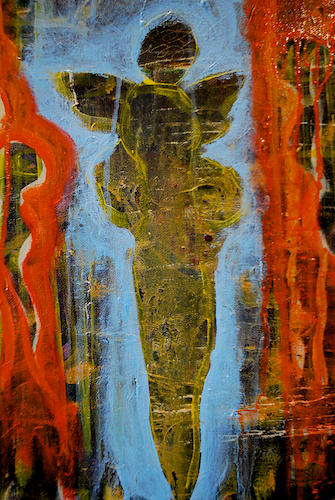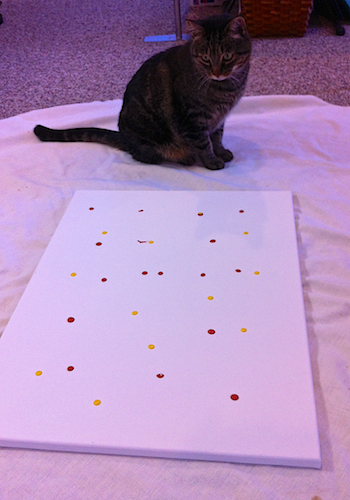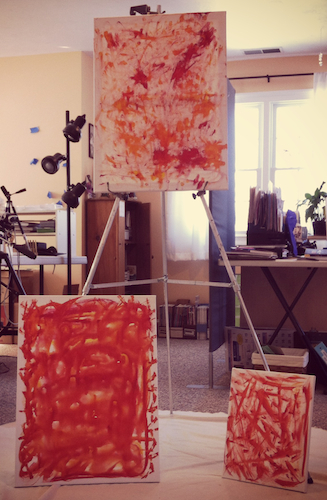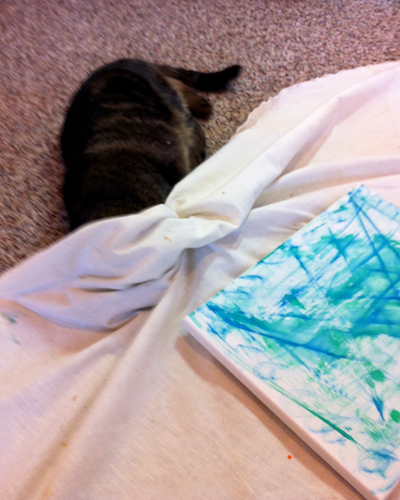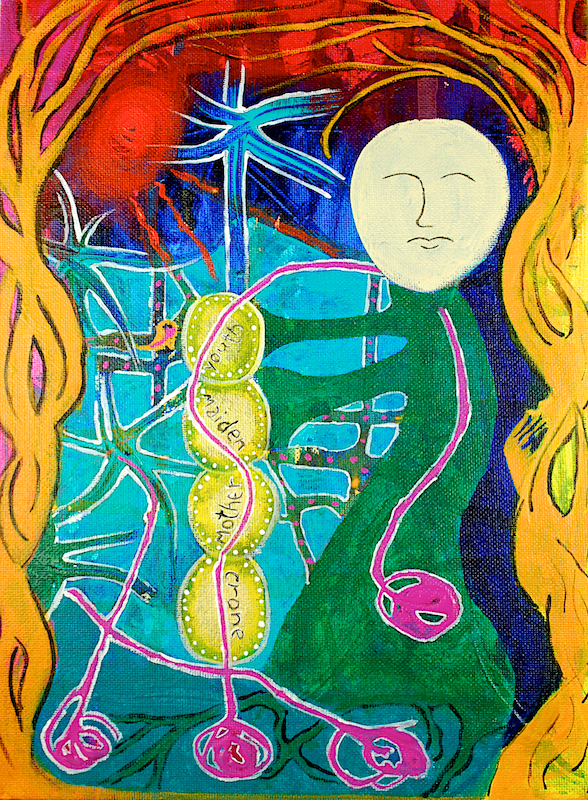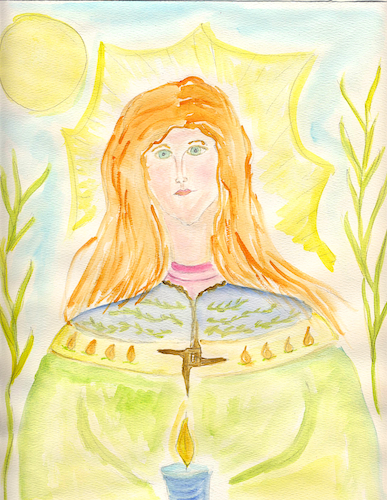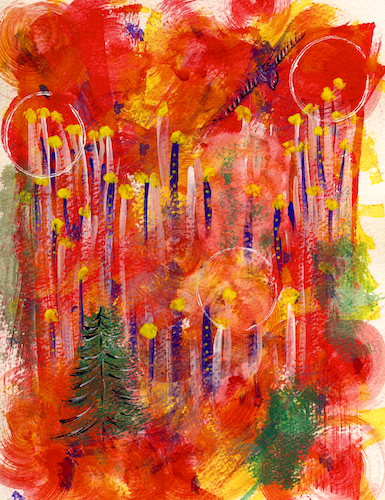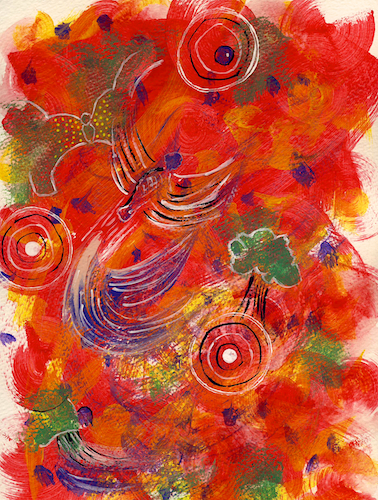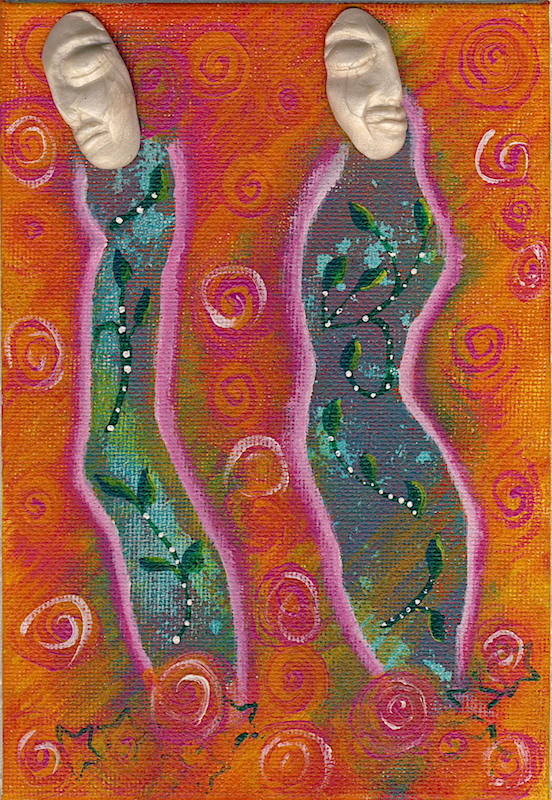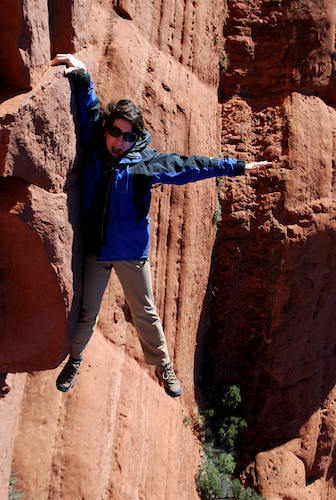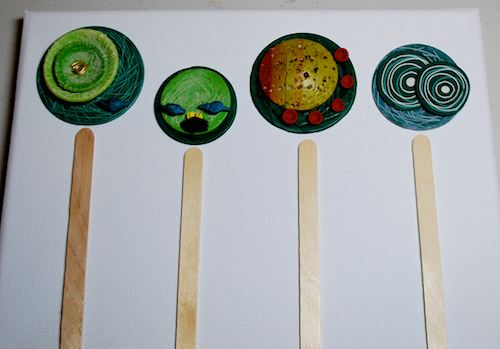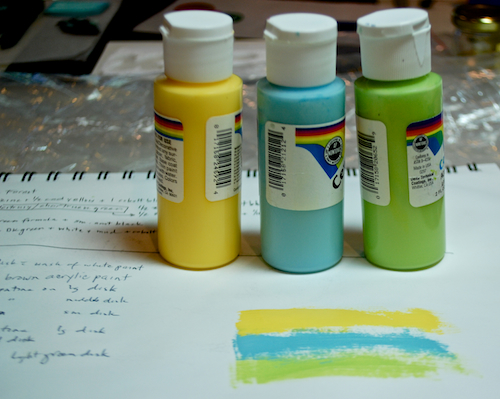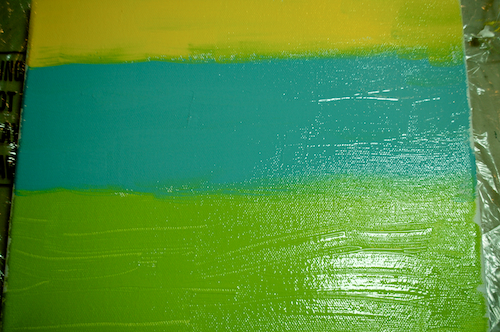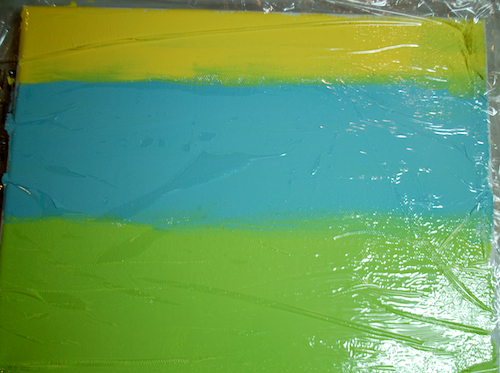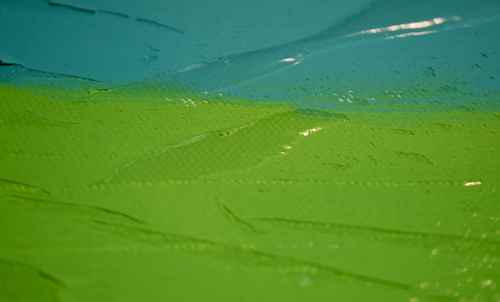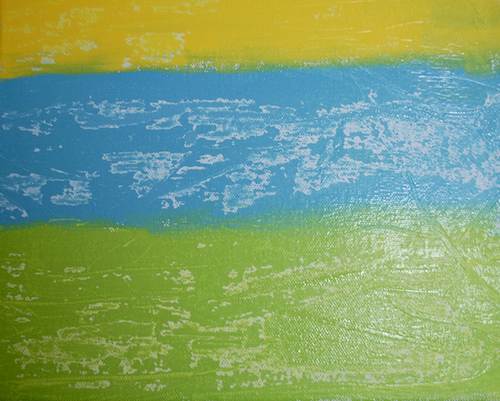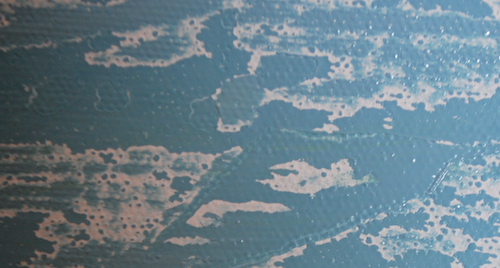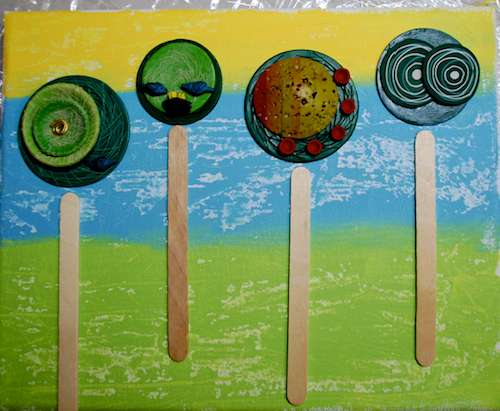During the winter, my local art guild had a creativity challenge for members. We’ve had these “exercises” before and it’s always fun to see what people create when challenged to think out of the box, out of their comfort zone, and/or out of their usual medium.
In this particular challenge we were asked to create something inspired by, or with, a found object. But not just any ol’ found object. Nope. This time members brought a found object from their home, placed in a paper bag, to our monthly meeting. All the bags were put in the middle of the table. Then we took turns, kind of, choosing a bag from the pile. No peeking. Off each of us went with our little found object of inspiration. The deadline for revealing our found object creation would be the next month’s meeting.
What was my found object? Two brass rings about 1″ in diameter. They look like rings you might find on an apron or a belt. My first reaction? What the heck am I going to do with these?
My Creative Process
I looked at those rings and my brain came back instantly with a big blank. Kind of like a sheet of white paper or an empty canvas. Absolutely NOTHING. I put the brass rings on one of my work tables and let them sit there for a few days.
Finally, feeling a bit like Pooh Bear when he starts to think, I decided to use a word association game to stimulate some creative ideas.
I looked at the brass rings, held them in my hand, and started writing in my sketch book. I wrote down anything that came to mind when I looked at the rings. Things like “One ring to rule the world” and “Circle of Life” and “Two rings for marriage.” Even completely unrelated phrases such as “Cool runnings” and “Square peg in a round hole” were fair game.
Then I let the list sit for a few more days. Because no ideas were coming to me. Yet. I believe you can’t force the process.
Breakthrough
This challenge came during the time I was taking Flora’s class. That meant I had several canvases strewn about the studio in different phases of creation. A few of them were used to collect excess paint. If I had extra paint on my brushes or on my main palette at the end of a painting session, I would swipe the brushes clean on a blank canvas. This is when my breakthrough happened.
I remembered Flora telling us that one way to create an intuitive painting is to work with shapes. Repeating shapes. Abstract shapes. It didn’t have to be complicated. KISS, I say. Keep it simple, stoopid.
I picked up one of the excess paint canvases and a Sharpie marker. I started to write all the phrases from my sketch book, the ones from my word association game, onto the canvas. I started writing on the long side of the canvas, turned it 90 degrees, and continued writing on the short side. Turned it 90 degrees again and kept writing on the long side. As I wrote, even more words came to mind. I did this until all the phrases were written on the canvas in a continuous square-circle shape. It ended when I was almost near the center of the canvas.
Somewhere along the way I had an idea to paint the brass rings white and where I would put them on the canvas. I would use the circle shape as my inspiration.
Result
I don’t have a lot of process pictures. You know how it is when you get into the flow and just keep working. Who has time to think about stopping and taking pictures along the way?
This is the canvas at a very early stage when it was used to collect excess paint.
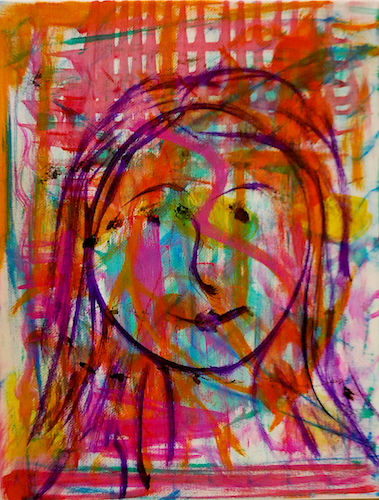 By the time I started writing words all over it, several more layers had been applied to the canvas. The face disappeared quickly.
By the time I started writing words all over it, several more layers had been applied to the canvas. The face disappeared quickly.
The picture below is one of the few in-process pictures I found. The brass rings that started this whole piece are in the lower right corner. I attached them to the canvas with heavy gel medium.
The remaining pictures show the finished canvas.
Most of the words I wrote on the canvas were covered by paint. Though if you look at it real close, you may see a few words or letters peeking through the paint.
This piece taught me how to work with a limited color palette, repetition of shapes, and creating movement in the piece so your eye travels around the canvas.
Thanks for stopping by.



